Nutrients and basic functions in feed
Posted by Animall Feed Blok Making Machine | updatetime 2020-07-22 16:54
Nutrients and basic functions in feed
In order to maintain their own life activities, animals must take food from the outside world. Animal food is called feed. Except for a small number of livestock feeds from animals, minerals and industrial products, most of them come from plants. Animals and plants are composed of chemical elements, and most of the chemical elements are combined to form complex organic and inorganic compounds. To study the types and quantities of nutrients contained in feed, chemical analysis methods are generally used.
Firstly, classification of nutrients in feed
"According to conventional analysis, the compounds that make up animal and plant bodies are moisture, crude ash, crude protein (CP), crude fat or ether extract (EE), crude fiber (CF), and nitrogen-free extract (NFE).
1. Moisture Water in animals and plants generally exists in two states. One is contained in the body cells of animals and plants, and is not tightly bound to the cells and is easily volatilized. It is called free water or free water; the other is tightly combined with the colloidal substances in the cells to form a water film outside the colloid, which is difficult to volatilize. It is called bound water or bound water. The sum of these two kinds of water in the body of animals and plants is called total water.
2. The residue obtained after the crude ash is burned at 550°C. The residue mainly contains minerals such as oxides and salts, and also includes the sediment mixed with feed, so it is called crude ash or minerals.
3. Crude protein: Determine the total nitrogen in the feed according to the Kjeldahl method, and multiply the total nitrogen value by 6.25 to obtain the product, which is called the crude protein in the feed. The nitrogen content of most proteins is quite close, generally 14% to 19%, with an average of 16%. Therefore, for protein determination, the protein content can be calculated as long as the nitrogen content in the sample is measured.
Protein content = sample nitrogen content × 100/16 = sample nitrogen content × 6.25
In animals and plants, there is non-protein nitrogen besides protein, so the protein obtained from the nitrogen content measured above is usually called crude protein.
4. Crude fat Crude fat includes the ether soluble components in the feed (fat, wax, organic acid, ester-soluble pigment, fat-soluble vitamin, etc.). Therefore, the crude fat is usually called ether extract.
5. Carbohydrate carbohydrates are the most important component in plant feeds, accounting for about 50% to 80% of dry matter, and are the main source of energy in animal diets. According to routine analysis, carbohydrates can be divided into two parts: crude fiber and nitrogen-free extract.
Crude fiber (CF) is composed of cellulose, hemicellulose, polypentose and inlay substances (lignin, keratin). It is the main component of plant cell walls and the most indigestible nutrient in feed.
Cellulose is a kind of oligosaccharide formed by the glycoside bonds of glucose molecules. It has stable chemical properties. Only under the action of a certain concentration of sulfuric acid can it achieve the purpose of hydrolysis. Its nutritional value is similar to that of starch; It is the most widely distributed in the plant kingdom and can be hydrolyzed by dilute acid or dilute alkali;. Lignin is the most stable and toughest substance. It is not a nutrient component in plants, and its content affects the nutritional value of feed When the lignin content reaches 40%, the general microorganisms can hardly decompose.
CF content in feed is negatively correlated with nutrient digestibility, but CF measured by conventional analysis methods is lower than the actual content (part of hemicellulose and lignin are hydrolyzed during acid-base treatment). In order to improve the analysis of CF, VanSoest (1976) suggested using neutral detergent fiber (NDF), acid detergent fiber (ADF), and acid detergent lignin (ADL) as indicators for determining fibrous substances in feed.
Nitrogen-free extract (NFE) is the nitrogen-free material in the organic matter in the feed except fat and crude fiber. It is collectively referred to as nitrogen-free extract or soluble carbohydrates, including monosaccharides, disaccharides and polysaccharides ( Starch) and other substances. The most widely distributed sugars in plant feeds are monosaccharides and disaccharides. Monosaccharides mainly exist in the fruits of plants, and the content in general feeds is very small; disaccharides are rich in sugar beets; starch is a plant's reserve substance. It is rich in plant seeds, fruits, roots and tubers. For example, the starch content in corn seeds is about 70%.
Conventional feed analysis does not directly analyze nitrogen-free extracts, but is derived from the difference between the weight of the original sample and the sum of moisture, crude ash, crude protein, crude fat, and crude fiber.
Secondly, the bacis functions of various nutrients in feed
Secondly, the bacis functions of various nutrients in feed
The basic functions of various nutrients in feed can be summarized into three aspects
(1) As the structual material of the animal body, nutrients are the constituent materials of every cell and tissue of the animal body, such as bones, muscles, skin, connective tissue, teeth, feathers, horns, claws and other tissues and organs. Therefore, nutrients are indispensable in the process of animal life and normal production.
(2) As an energy source of animal survival and production. In the process of animal life and production, the penergy required to maintain body temperature, freely move around and produce products comes from nutrients. Carbohydrates, fat and protains can provide energy for animals, but carbohydrates are the most economical. In addition to energy supply, fat is also the best form of energy storage in the animal body.
(3) Vitamins, minerals, certain amino acids, fatty acids, etc., in the nutrients that regulate the normal functional activities of the animal body, play an indisensable regulatory role in the animal body. If it is lacking, the normal physiological activities of the animal body will be disordered and even die.
In addition to the above functions, nutrients in the animal's body, after a series of metabolic processes, can also form a variety of in vitro products.
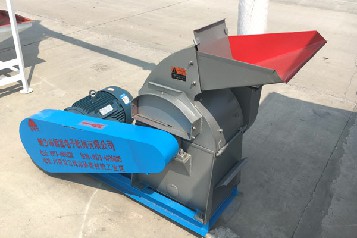
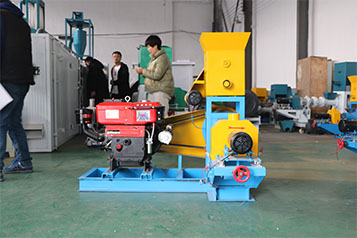
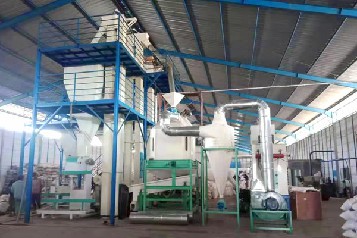
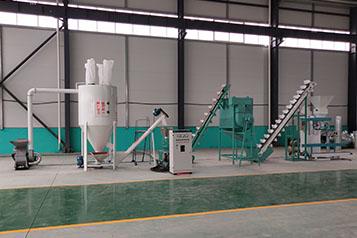
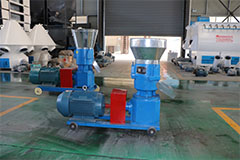


Leave your comment Here